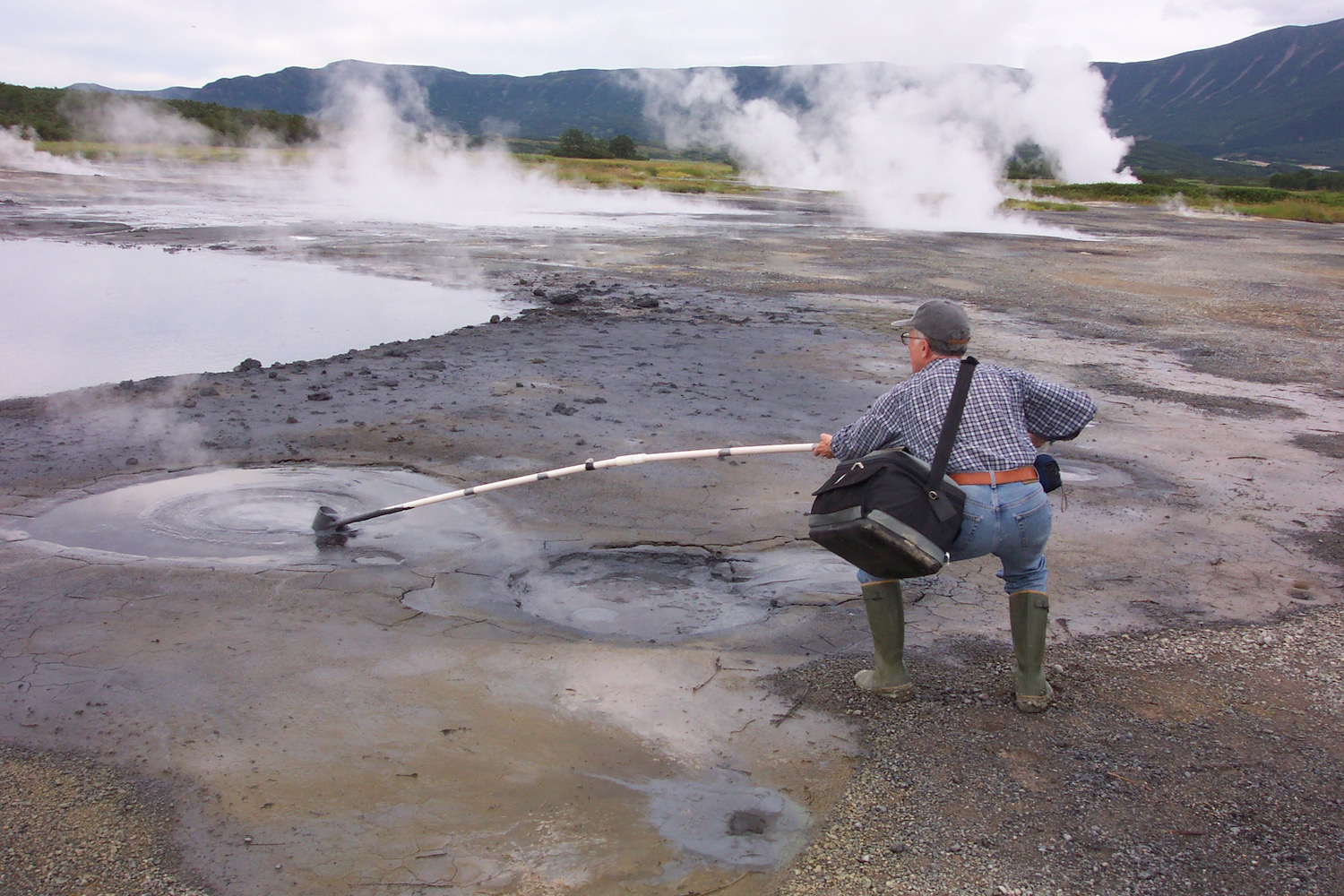
Tamas Torok collecting field samples in the Uzon Caldera, a volcanic environment located on the Kamchatka Peninsula in the Russian Far East, to find extremophiles. (Credit: Eric Mathur)
By Julie Bobyock
Space exploration has allowed humans to journey from earth to space – but humans may not be the only organisms hitching a ride by spacecraft. Microbiologists who study extreme environments are on the lookout for microorganisms present on spacecraft surfaces that could potentially contaminate the pristine environments of outer space. Now a new fungal strain has been discovered in a spacecraft assembly facility and named after a long-time Berkeley Lab microbiologist, Tamas Torok.
When new plant or animal species are discovered, they are often named after famous scientists, or even well-known public figures. This also happens when a new microorganism is discovered – in this case P. torokii, a novel fungal species of the genus Parengyodontium. Torok, Berkeley Lab affiliate scientist in the Climate and Ecosystems Sciences Division, has decades of experience studying microbes in extreme environments, with a focus on the diversity and abundance of microorganisms in low biomass spacecraft assembly facilities, which are areas that control for microbes in preparation for materials to go into space.
“It’s a big honor,” Torok said. “Especially because I started my whole scientific career with fungal organisms. I worked with fungi for the first 18 years.”
The new fungal strain shows the ability to produce biofilm, which means it can attach to surfaces and survive cleaning protocols in the spacecraft assembly facility where it was discovered. The strain’s ability to survive in this low-nutrient environment is of concern because these cleanroom facilities must comply with NASA’s robotic mission requirements. Monitoring spacecraft bioburden – microbes present on the spacecraft or in the assembly facilities – is important so that scientists do not falsely claim extraterrestrial life has been discovered if contaminated spacecraft return microbes to earth. Scientists are aiming to develop more research and novel cleaning protocols to detect and limit the fungal strain’s potential for contamination in the spacecraft assembly facility.